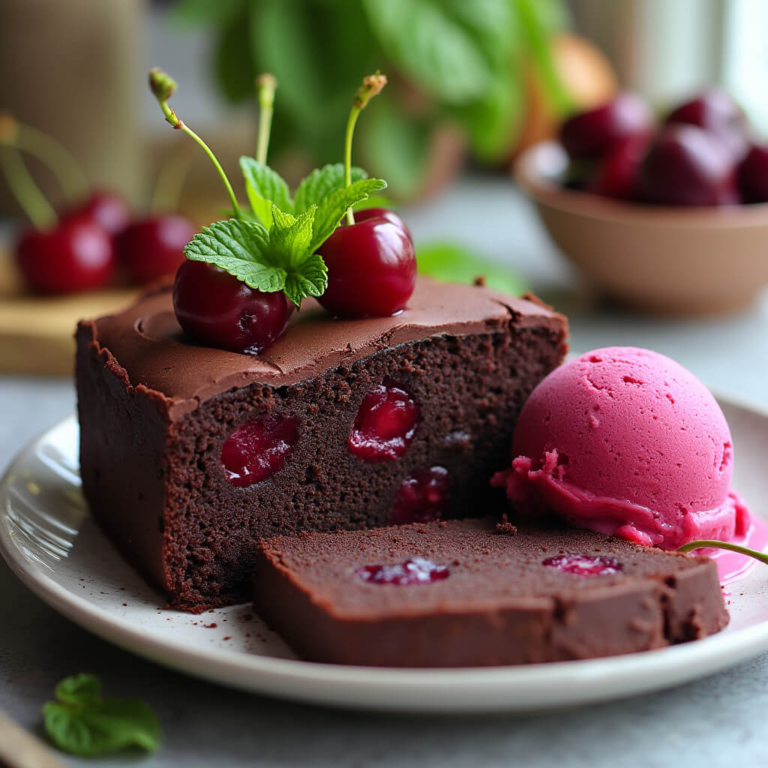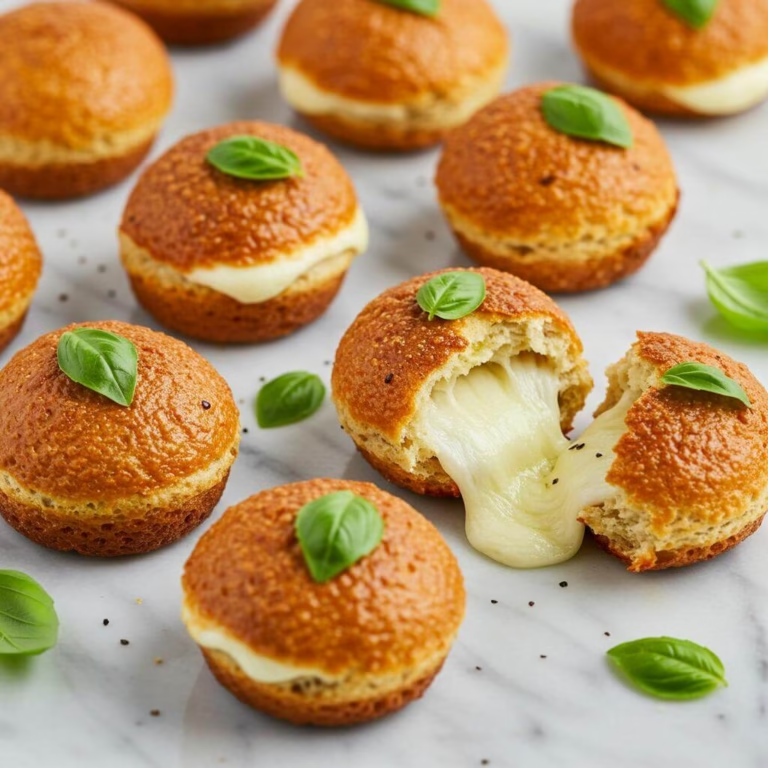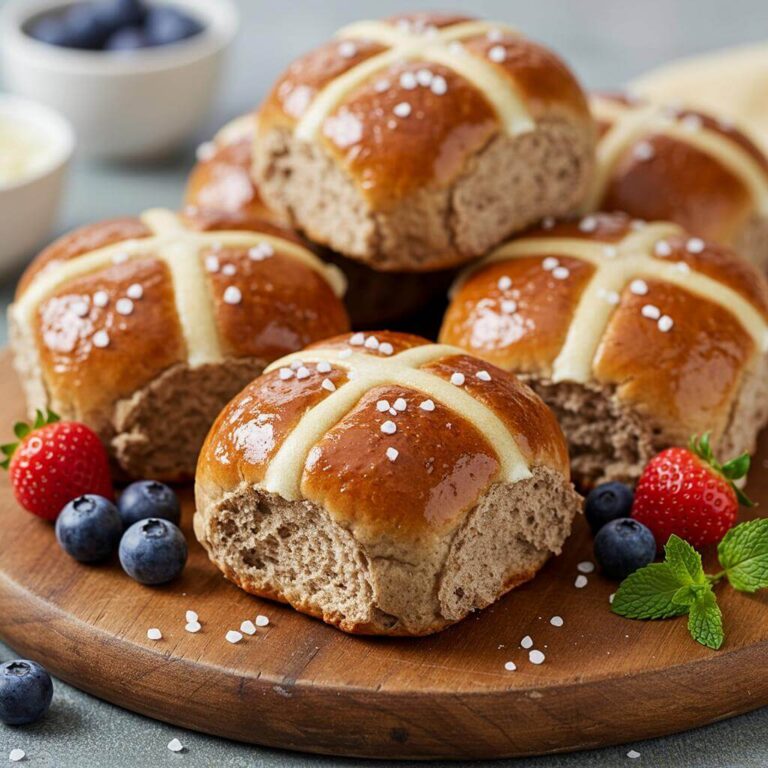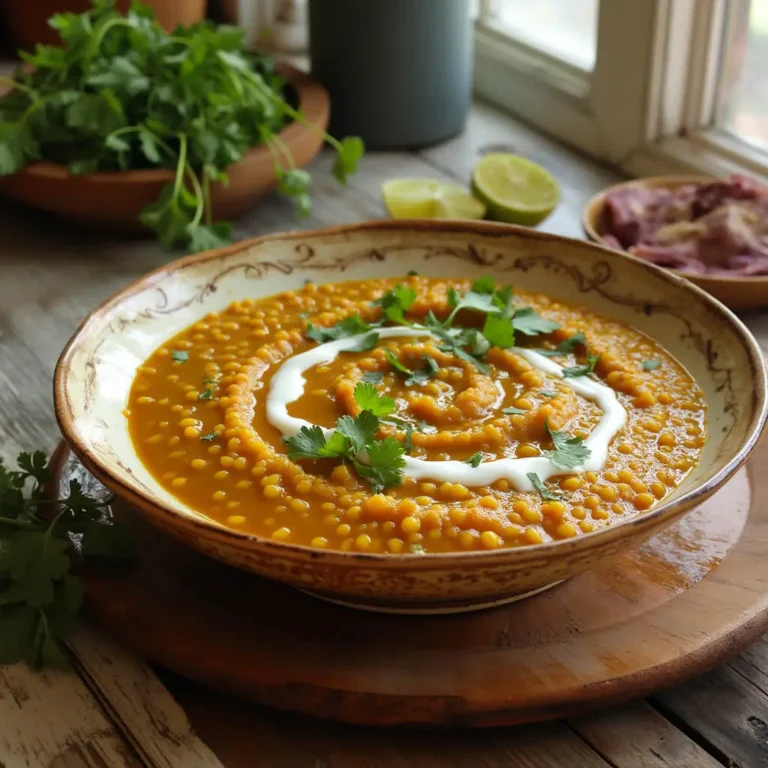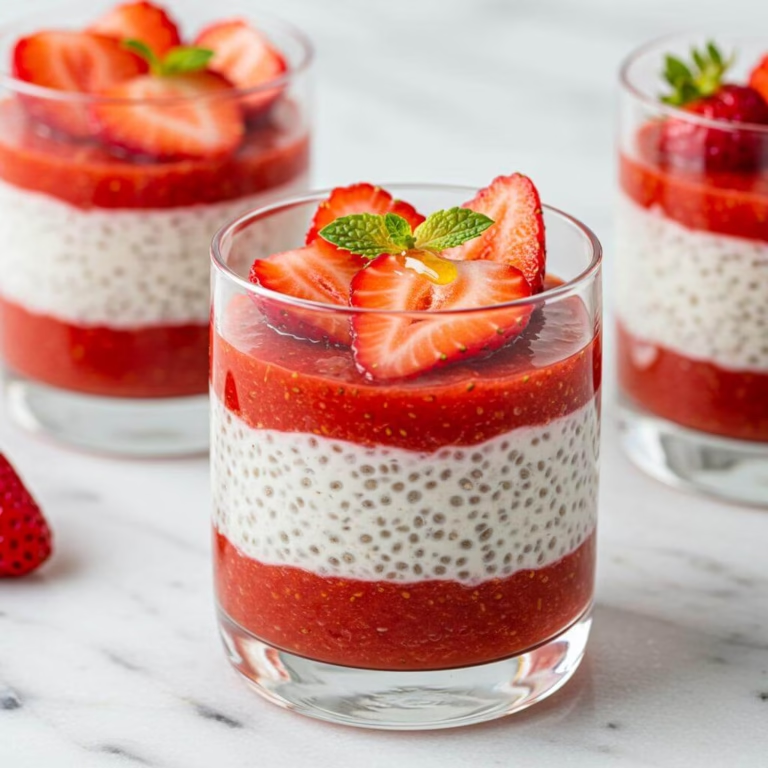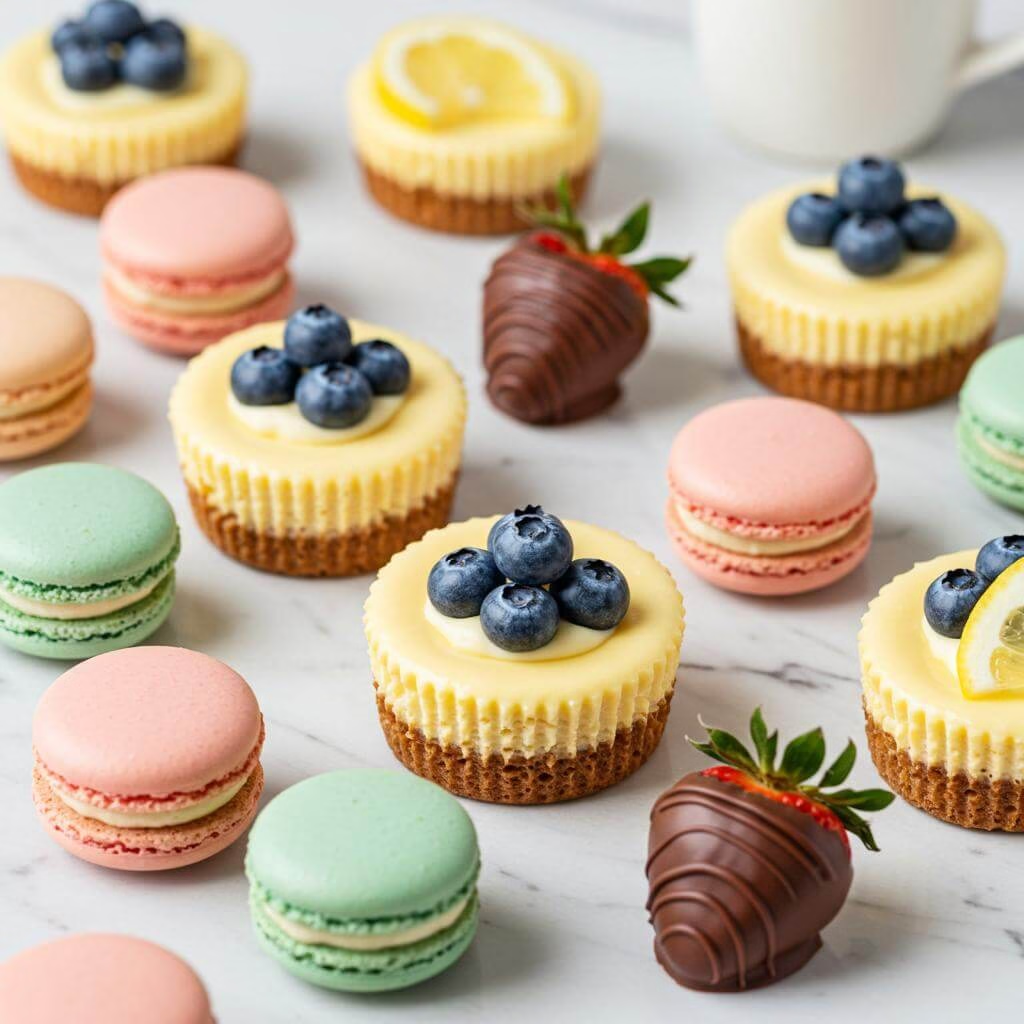
Embrace the Sweetness of Spring with Our Best Gluten Free Easter Desserts!
Easter is just around the corner, and with it comes the promise of sunshine, family gatherings, and, of course, those delightful sweet treats that make any celebration complete. If you’re navigating a gluten-free lifestyle, the thought of holiday baking might sometimes bring a touch of apprehension – will it taste as good? Will it be complicated? Well, get ready to cast those worries aside! Here at Be Gluten Free, we believe that everyone deserves to indulge in spectacular desserts, especially when it comes to festive occasions. That’s why we’ve lovingly curated a collection of over 25 easy and absolutely show-stopping gluten free Easter desserts that are guaranteed to impress.
Forget about missing out or settling for less. Our mission is to bring you recipes that are not only safe and delicious but also surprisingly simple to create. From vibrant, fruit-filled delights that sing of spring to rich, decadent chocolate creations, there’s a perfect treat waiting for every palate. These aren’t just alternatives; they are fantastic gluten free Easter desserts in their own right, designed to bring joy and satisfaction to your holiday table. Imagine presenting a stunning cake that no one would guess is gluten-free, or a batch of cookies so good they disappear in minutes! For a classic Easter favorite, why not try our amazing Gluten-Free Carrot Cake with Cream Cheese Frosting? It’s a true crowd-pleaser and a wonderful example of how delightful gluten-free baking can be.
We understand that baking gluten-free can sometimes feel like a science experiment, but our recipes are developed with clarity and ease in mind. We provide practical tips and use readily available gluten-free ingredients, so you can bake with confidence, ensuring your creations contribute wonderfully to a diverse and satisfying gluten-free diet. Whether you’re an experienced gluten-free baker or just starting out, you’ll find these recipes approachable and enjoyable. This Easter, let’s fill your kitchen with the wonderful aromas of baking and create some truly memorable gluten free Easter desserts. For a versatile option that’s perfect for feeding a crowd and can be beautifully decorated for any spring celebration, consider making a delicious Gluten-Free Sheet Cake. Get ready to discover your new favorite Easter treat and share the gluten-free love!
Why These Gluten Free Easter Desserts Work Exceptionally Well
Ah, the joy of gathering for Easter, complete with a table laden with seasonal delights! And for those celebrating without gluten, the desire for truly show-stopping, delicious desserts is just as strong. Let’s dive deep into why these specific gluten free Easter desserts are set up for phenomenal success, offering textures, flavors, and structures that rival their gluten-containing counterparts—or perhaps even surpass them!
Understanding the Gluten-Free Challenge
Gluten, a protein found in wheat, rye, and barley, is the magic ingredient that gives traditional baked goods their structure, elasticity, and chewy texture. It forms a network when mixed with liquid, trapping air pockets and providing support. Remove gluten, and you can end up with crumbly, dense, or tough results if you don’t compensate correctly. This is where the brilliance of thoughtfully developed gluten free Easter desserts comes into play.
The Power of Smart Ingredient Selection
These recipes don’t just swap wheat flour for a single alternative; they employ a strategic combination of ingredients that work synergistically to mimic the positive attributes of gluten. While not every single recipe details the precise flour blend, common components mentioned like almond flour and coconut flour are clues to their success:
- Almond Flour: Rich in fat and protein, almond flour brings moisture, tenderness, and a lovely, slightly nutty flavor. Its higher fat content produces a softer crumb and helps prevent dryness, a common pitfall in gluten-free baking. It’s particularly effective in cakes and cookies, contributing to that desirable melt-in-your-mouth texture seen in many of these gluten free Easter desserts.
- Coconut Flour: This ultra-absorbent flour requires careful handling but brings unique benefits. Used correctly, it contributes lightness and a mild sweetness. Its high fiber content aids in creating structure, working alongside other ingredients to prevent crumbling. When blended with other flours or used in specific recipes designed for its properties (like the Gluten Free Coconut Cake mentioned), it helps achieve a tender, moist crumb, making it ideal for delicious gluten free Easter desserts.
- Beyond Single Flours: Successful gluten-free baking often relies on a blend of flours (like rice flour, tapioca starch, potato starch, etc. – though not all listed explicitly here, they are common GF baking staples). These blends balance protein, starch, and fiber for optimal structure, tenderness, and browning. The success of these recipes implies a skillful use of such combinations, or other ingredients stepping up to fill the gap.
Moisture is King (and Queen!)
One of the biggest challenges in gluten-free baking is maintaining moisture. Without gluten’s network to trap water, baked goods can dry out quickly. These gluten free Easter desserts tackle this head-on with ingenious additions:
- Fat-Rich Ingredients: Ingredients like mayonnaise (in the Chocolate Mayonnaise Cake!), sour cream (in the Banana Cake), and cream cheese (in the Carrot Sheet Cake and Pound Cake) are moisture powerhouses. The fats coat flour particles, inhibiting the formation of a dry, rigid structure. They also add richness and tenderness, resulting in incredibly moist and delightful gluten free Easter desserts.
- Added Fruits & Vegetables: The inclusion of ingredients like crushed pineapple (Carrot Cake, Million Dollar Cake, Pineapple Upside Down Cake, Hummingbird Cake), bananas, apples, pears, and berries is crucial for moisture. Fruits contain natural sugars and water, which keep the crumb soft and prevent staling. They also add fantastic flavor and natural sweetness, brightening up your gluten free Easter dessert spread.
- Coconut: Whether flour or shredded, coconut contributes fat and moisture, enhancing the tenderness and flavor profile, perfect for tropical-inspired gluten free Easter desserts like the Pina Colada and Hummingbird cakes.
Structure Without the Strands
How do these recipes hold together without gluten’s elastic network? While specific binders like xanthan gum or psyllium husk aren’t explicitly named for every recipe, they are common tools in GF baking. However, other ingredients mentioned also play a vital role in structure:
- Eggs: Especially evident in the Angel Food Cake recipe, egg whites provide significant structure through aeration and protein coagulation. Whole eggs contribute both structure (protein) and tenderness (yolk fat).
- Dairy/Fats: The proteins in dairy (like sour cream, cream cheese) and the structure provided by solidified fats (like butter or the fat in mayonnaise) also contribute to the cake’s architecture, creating a stable yet tender crumb that won’t easily fall apart.
- Baking Techniques: The emphasis on simple, from-scratch methods and styles like bundt cakes (mentioned as particularly good for GF baking) also helps. Bundt pans distribute heat evenly and provide structural support during baking, often leading to reliably moist and well-formed cakes, making them a favorite for gluten free Easter desserts.
Flavor and Simplicity at the Forefront
Beyond the technical aspects, these recipes shine because they prioritize flavor and ease. Utilizing ingredients like citrus zest, fruit, chocolate, coconut, and classic pairings ensures the desserts are vibrant and appealing. The focus on “easy to make from scratch” methods means less stress and more enjoyment, allowing anyone to create beautiful and delicious gluten free Easter desserts for their celebrations. The variety, from classic cakes reinvented (Carrot Cake, Pineapple Upside Down) to new favorites (Cherry Almond, Raspberry Cornmeal), ensures there’s a perfect treat for every taste at your gluten free Easter desserts table.
In essence, these gluten free Easter desserts work so well because they replace the function of gluten with a thoughtful combination of alternative flours, moisture-rich ingredients, and structural aids, all while focusing on delicious flavor and simple execution. They are designed to ensure that celebrating Easter gluten-free doesn’t mean compromising on taste, texture, or enjoyment. Get ready to bake some truly spectacular gluten free Easter desserts!
Transform Your Mornings with 33 FREE Gluten-Free Breakfasts!
Unlock delicious, easy-to-make recipes that will make you excited to start every single day. No more boring breakfasts, just pure flavor and joy!

Get Your FREE Breakfast Ebook Now!
(No credit card required. Instant download.)
Ingredients, Nutritional Information, and Additional Tips
Crafting delicious and memorable gluten free Easter desserts is a joyous part of celebrating the season. Understanding the role of key ingredients, knowing the general nutritional benefits, and having a few tricks up your sleeve can elevate your Easter baking experience. While specific measurements vary for each delightful treat, here’s a guide to the common components and helpful insights for your gluten free Easter desserts journey.
Key Ingredients for Gluten Free Easter Desserts
Creating wonderful gluten-free textures and flavors relies on selecting the right components. Here are ingredients commonly found in these types of gluten free Easter desserts:
- Gluten-Free All-Purpose Flour Blend: This is often the base for many gluten-free cakes, cookies, and cobblers. A good quality blend typically combines several types of gluten-free flours (like rice flour, potato starch, tapioca starch) to mimic the structure and texture of wheat flour. Look for blends that contain xanthan gum or guar gum, or be prepared to add it, as these gums are crucial for binding and providing elasticity that gluten would normally offer.
- Xanthan Gum or Guar Gum: Essential for binding ingredients and providing structure in gluten-free baking. It helps prevent crumbly textures in cakes and cookies, giving them a desirable chewiness and stability. A little goes a long way! Find xanthan gum for baking online.
- Alternative Gluten-Free Flours: Some recipes specifically call for flours like almond flour (adds moisture, tenderness, and a nutty flavor, great for cakes and crusts), coconut flour (highly absorbent, requires more liquid and eggs, imparts a subtle coconut flavor, often used in dense or dairy-free recipes), or cornmeal (provides a slightly gritty texture and unique flavor, excellent in certain cakes or crusts).
- Leavening Agents: Baking powder and baking soda are critical for helping gluten-free baked goods rise, as they don’t have the gluten network to trap air. Ensure they are fresh for the best results.
- Fats: Butter, oil (like vegetable or canola), or even mayonnaise (as in the chocolate cake mention) provide moisture and tenderness. The type of fat can impact the final texture and flavor. For dairy-free options, consider using vegan butter sticks or coconut oil.
- Sugars: Granulated sugar, brown sugar, or powdered sugar sweeten the desserts and contribute to texture and moisture retention. Natural sweeteners like maple syrup or honey might be featured in certain variations.
- Eggs: Eggs provide structure, richness, and help with leavening. They are particularly important in gluten-free baking for binding ingredients.
- Dairy or Dairy Alternatives: Milk, buttermilk, cream cheese, or whipped cream are used for moisture, richness, and frostings. Many gluten free Easter desserts can easily be adapted using unsweetened non-dairy milks (almond, soy, oat), vegan cream cheese, or coconut cream.
- Fruits: Fresh, frozen, or canned fruits like strawberries, cherries, pineapple, oranges, apples, pears, raspberries, and bananas bring natural sweetness, moisture, and vibrant flavor to many of these Easter treats.
- Flavorings & Extracts: Vanilla extract is a staple, enhancing sweetness and complexity. Lemon zest/juice, orange zest, almond extract, or cocoa powder are used to create specific flavor profiles.
- Add-ins: Chocolate chips, shredded coconut, nuts, or crushed gluten-free pretzels add texture and flavor dimensions.
Nutritional Information & Benefits
While specific nutritional counts vary greatly depending on the ingredients and portion size of each individual recipe, focusing on gluten free Easter desserts offers inherent benefits:
- Gluten-Free: The primary benefit, of course, is suitability for individuals with celiac disease or gluten sensitivity, allowing everyone to partake in the holiday festivities without dietary concerns.
- Potential for Fiber: When recipes incorporate gluten-free flours made from whole grains (like brown rice flour, sorghum flour, or oats) or ingredients like nuts and seeds (almond flour) and fruits, these desserts can offer more dietary fiber compared to those made with refined wheat flour. Fiber supports digestive health and can help with satiety.
- Nutrient Diversity: Utilizing a variety of gluten-free flours, fruits, and nuts can introduce a broader spectrum of vitamins and minerals than traditional wheat-based desserts.
- Control Over Ingredients: Baking from scratch allows you to have control over the quality and quantity of ingredients used, potentially reducing artificial additives or excessive sugars if you choose to modify recipes.
- Dairy-Free Options: Many gluten-free recipes are easily adaptable to be dairy-free, broadening accessibility for those with lactose intolerance or dairy allergies, without sacrificing the celebratory aspect of gluten free Easter desserts.
Substitutions, Variations, and Helpful Tips
Get creative and make these gluten free Easter desserts your own! Here are some handy tips and ways to adapt the recipes:
- Gluten-Free Flour Blends: If a recipe calls for a specific blend (like an all-purpose rice flour blend), using a different type might alter the texture. Blends with more whole grains can be denser, while those with more starch might be lighter but potentially gummier if overmixed. Stick to the recommended blend if possible, or choose a high-quality all-purpose gluten-free flour blend that you trust.
- Substituting Fats: Melted butter or oil can often be swapped 1:1. For solid fats like softened butter or shortening used in creaming methods, try a 1:1 swap with vegan buttery sticks for a dairy-free alternative. Coconut oil can also work but may impart a coconut flavor and texture might differ slightly.
- Egg Substitutions: For many recipes, especially muffins, quick breads, or forgiving cakes, you can often substitute eggs. Common swaps include flax eggs (1 tbsp flaxseed meal + 3 tbsp water per egg, let sit 5-10 mins), chia eggs (same ratio), mashed banana, applesauce, or commercial egg replacers. However, in recipes heavily reliant on eggs for structure (like angel food cake), substitutions are much more challenging or impossible.
- Dairy-Free Swaps: Easily make many recipes dairy-free by using unsweetened non-dairy milk (like almond, soy, or oat) instead of cow’s milk, vegan butter or oil instead of butter, vegan cream cheese instead of dairy cream cheese, and whipped coconut cream instead of whipped dairy cream.
- Fruit Variations: Feel free to swap out fruits! If a recipe uses strawberries, consider using blueberries, raspberries, or mixed berries, adjusting sweetness as needed based on the fruit’s tartness. For baked goods, ensure the fruit is relatively dry if using fresh or well-drained if frozen/canned.
- Chocolate Upgrades: Enhance chocolate flavors by using high-quality gluten-free chocolate chips or cocoa powder. Swirl in some raspberry puree into chocolate batter, or add a touch of espresso powder to deepen the chocolate notes.
- Spice & Extract Adjustments: Add warmth with cinnamon, nutmeg, cloves, or cardamom, especially in fruit-based or carrot cake style gluten free Easter desserts. Swap vanilla extract for almond extract, coconut extract, or even rum extract (ensure it’s gluten-free) to alter the flavor profile.
- Serving Suggestion: Elevate any of these gluten free Easter desserts by serving them warm with a scoop of dairy-free vanilla ice cream or a dollop of homemade whipped cream. Speaking of whipped cream, it’s simple to make in a stand mixer: combine 1-2 cups heavy whipping cream (or full-fat chilled coconut cream for dairy-free), ½ cup powdered sugar, and 1 tsp vanilla extract. Whip on high with the whisk attachment until stiff peaks form.
- Simplify Cakes: If multi-layer cakes feel daunting, bake the batter in a single 9×13 inch baking dish. Once cooled, simply frost the top. This significantly cuts down on preparation time and complexity, making gluten free Easter desserts easier for busy schedules.
- Consider Bars: Dessert bars (like brownies or traybake cakes) are often easier to make, slice, and serve, perfect for gatherings. Many cake and brownie recipes can be adapted into bar form.
- Make Ahead: Many cakes and baked goods benefit from being made a day in advance. Frosting can then be added closer to serving time. Cakes with pudding or fruit fillings often taste even better after refrigerating for a few hours (or overnight) to allow the flavors to meld, making them great options for prepare-ahead gluten free Easter desserts.
With these ingredients, nutritional insights, and flexible tips, you’re well-equipped to bake a variety of stunning and delicious gluten free Easter desserts that everyone can enjoy!
Essential Equipment for This Recipe
To prepare this delicious recipe, you’ll need the following kitchen tools:
- Mixing Bowls – A set of good mixing bowls is essential for prepping various ingredients.
Find Mixing Bowls on Amazon - Measuring Cups and Spoons – Accurate measurements are key to a successful recipe.
Find Measuring Cups and Spoons on Amazon - Baking Sheets – Perfect for even baking and consistent results.
Find Baking Sheets on Amazon - Whisks – Essential for thoroughly combining wet and dry ingredients.
Find Whisks on Amazon - Spatulas – For folding and mixing ingredients.
Find Spatulas on Amazon - Food Processors – To chop ingredients and help speed up prep time.
Find Food Processors on Amazon - Saucepans – To gently heat ingredients and create sauces.
Find Saucepans on Amazon - Chef’s Knives – Versatile for chopping, slicing, and dicing ingredients efficiently.
Find Chef’s Knives on Amazon - Cutting Boards – Protect your countertops while prepping ingredients.
Find Cutting Boards on Amazon
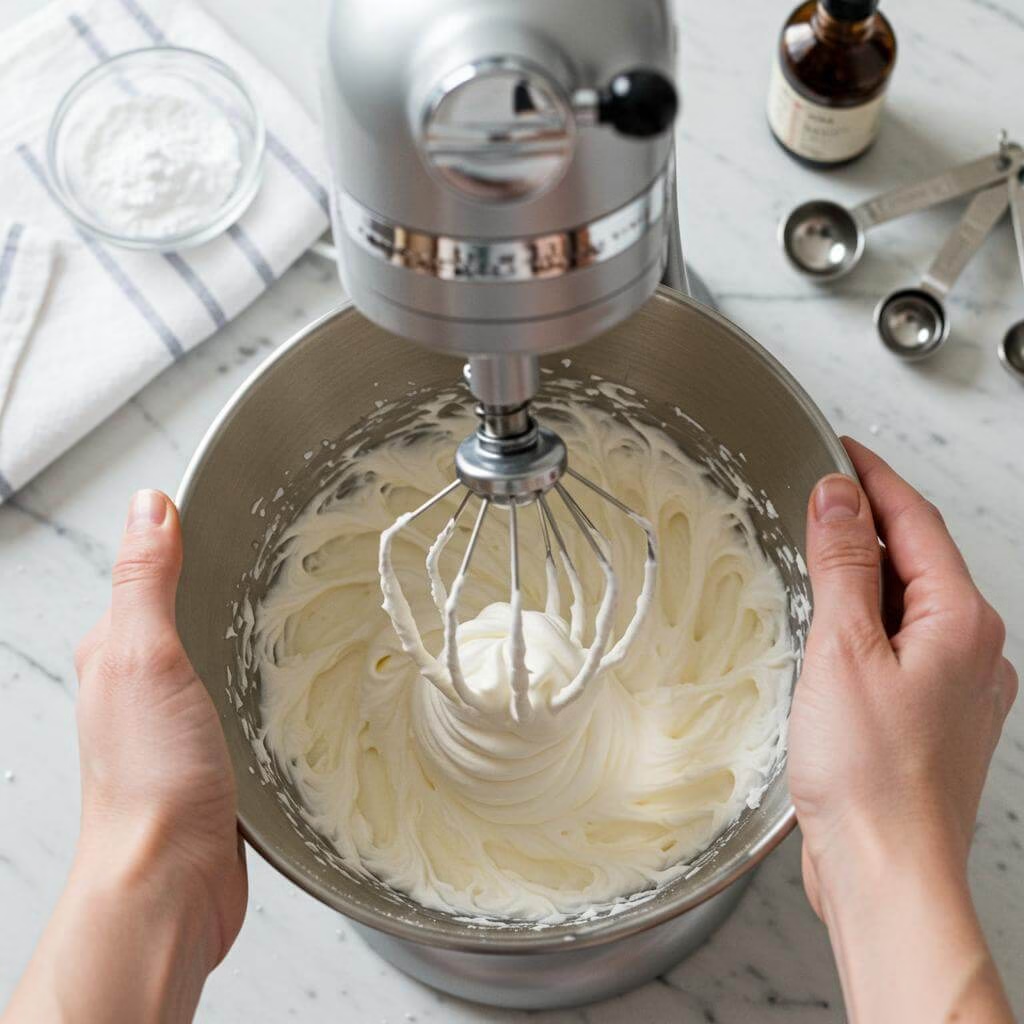
-
Simplify Your Cake Baking for Gluten Free Easter Desserts
If you’re looking for a less fussy way to make a beautiful cake for your Easter celebration, skip the layers! Instead of baking multiple rounds and stacking them, bake your entire cake batter (designed for layers) in a single 9×13 inch baking dish. This dramatically simplifies the process. Just bake the cake according to the original temperature and time instructions (though you may need to add a few minutes for the thicker cake), let it cool completely in the pan, and then simply frost the top. This method saves significant time by eliminating the need to handle delicate layers, fill between them, and frost the sides. It’s a fantastic shortcut for busy bakers preparing gluten free easter desserts, delivering all the flavor with much less stress. A sturdy 9×13 baking dish is a kitchen essential for this technique and many other baking projects.
-
Embrace the Ease of Dessert Bars
For effortless serving at your gathering, consider making dessert bars instead of a whole cake or individual treats. Bar recipes, like brownies, blondies, or oat bars, are typically baked in a single pan (like a square or rectangular baking pan), making them incredibly simple to prepare. Once baked and cooled, you just slice them into portions directly in the pan or on a cutting board. They are easy to transport, serve, and eat, requiring no special plating. Dessert bars are a perfect choice for delicious and convenient gluten free easter desserts that guests can easily grab and enjoy. They are wonderfully versatile and pair well with simple toppings like a dusting of powdered sugar, a drizzle of sauce, or a dollop of freshly made whipped cream.
-
Whip Up Homemade Whipped Cream for the Perfect Topping
Enhance your gluten free easter desserts, whether cakes, bars, or cobblers, with a dollop of light and airy homemade whipped cream. It’s surprisingly easy to make and far superior to store-bought options. To make it, you’ll need a stand mixer with a whisk attachment or a high-powered hand mixer. Start with 1-2 cups of cold heavy whipping cream. Add about ½ cup of powdered sugar (also known as confectioners’ sugar) to sweeten it, and a teaspoon of vanilla extract for flavor. Place all the ingredients into your mixer bowl. Begin mixing on a low speed to combine, then gradually increase the speed to high. Whip steadily until stiff peaks form. This means that when you lift the whisk, the peaks of cream stand up firmly without drooping. Be careful not to overmix, or your cream could turn into butter! This fresh whipped cream is the ideal finishing touch for many gluten free easter desserts, adding richness and elegance. Remember that chilling your bowl and whisk for about 15 minutes before starting can help the cream whip faster and achieve stiffer peaks.
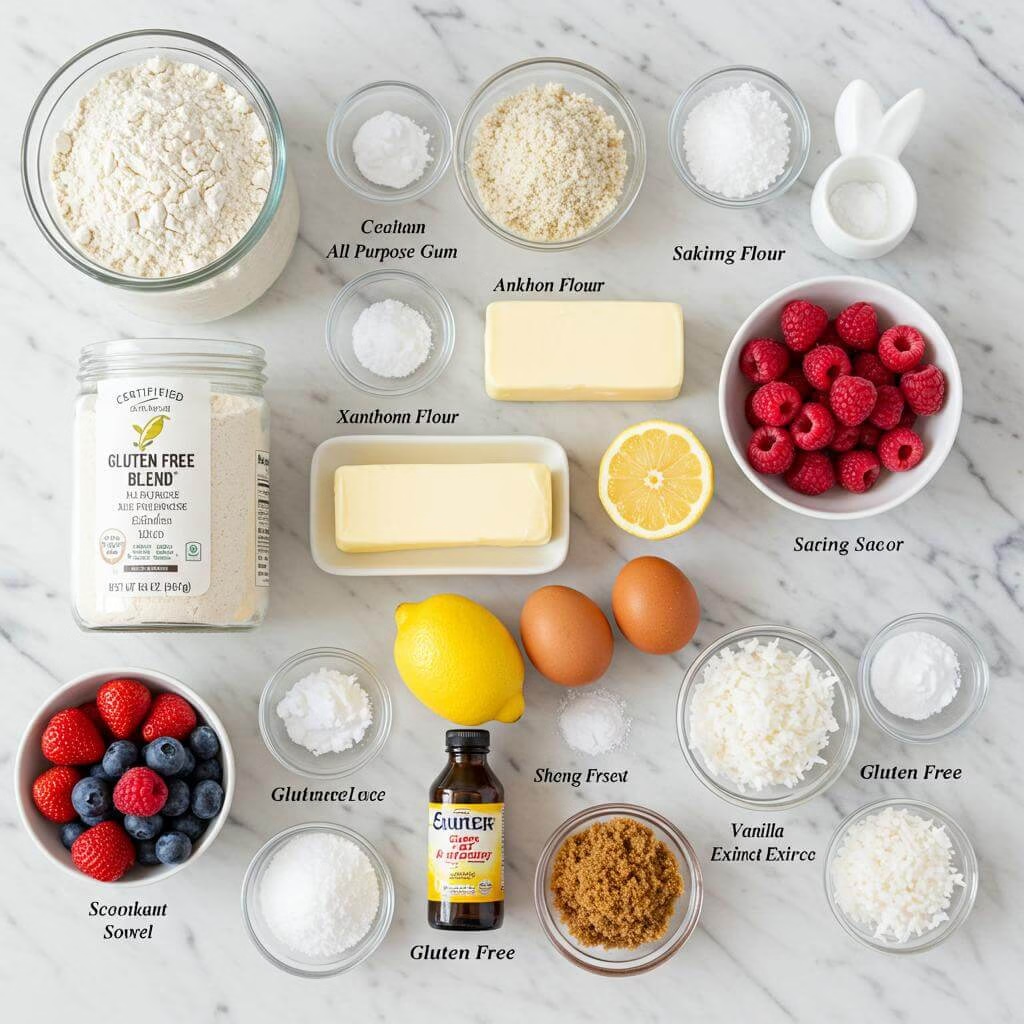
Tips for Perfect Gluten Free Easter Desserts
Ready to dive into creating some truly magical gluten free Easter desserts this year? Whether you’re whipping up a moist cake, soft cookies, or a delightful cobbler from this collection, these expert tips are crafted just for you to ensure your gluten-free creations turn out absolutely perfect every time. Gluten-free baking has its unique quirks, but with these pointers, you’ll confidently avoid common pitfalls and achieve delicious results for your gluten free Easter desserts!
- Measure Your Gluten-Free Flour Blend Accurately: This is perhaps the most critical step in gluten-free baking. Gluten-free flour blends vary greatly in density and composition. Always use the “spoon and level” method: gently unique a spoon to scoop the flour into your measuring cup, then level off the excess with a straight edge. Scooping directly from the bag can compact the flour, leading to too much flour and a dry, dense, or crumbly result in your gluten free Easter desserts.
- Bring Cold Ingredients to Room Temperature: Ensure eggs, butter, and dairy (like milk or sour cream if used) are at room temperature unless the recipe specifically states otherwise. Room temperature ingredients emulsify more easily, creating a smoother, more uniform batter or dough. This leads to a better rise and a more tender texture in your finished gluten free Easter desserts, especially cakes and cookies.
- Don’t Overmix the Batter: Unlike wheat flour, gluten-free flours don’t develop gluten networks that can become tough when overmixed. However, vigorous mixing can overwork starches and binders, leading to a gummy or rubbery texture. Mix just until the ingredients are combined and there are no dry streaks of flour.
- Give Gluten-Free Doughs a Rest: Many gluten-free cookie, bread, or even some cake batters benefit from a short rest period (15-30 minutes) before baking. This allows the starches and gums in the unique flour blend to hydrate fully, improving the structure, reducing grittiness, and making the dough easier to handle. This hydration is key for achieving wonderful texture in your gluten free Easter desserts.
- Consider a Binder (If Not Already Included): Many gluten-free flour blends already contain a binder like xanthan gum or guar gum, but some recipes might call for an additional amount or use single flours that require one. Binders mimic the elasticity and structure of gluten, preventing baked goods from crumbling. Ensure you add the correct amount – typically 1/4 to 1/2 teaspoon per cup of flour blend for cakes and cookies, more for breads. Too much can result in a gummy texture.
- Bake in the Center of the Oven: For even heat distribution and consistent baking, always place your pan in the center of the oven unless the recipe specifies otherwise. This helps your gluten free Easter desserts bake through uniformly without burning the edges before the center is set.
- Check for Doneness Carefully: Gluten-free baked goods can sometimes look done on the outside before the inside is fully cooked. For cakes and muffins, the toothpick test (inserting a toothpick into the center – it should come out with moist crumbs, not wet batter) is reliable. For cookies, look for slightly golden edges but a still-soft center. They will firm up as they cool.
- Cool Completely Before Handling or Frosting: Allow cakes to cool in their pan for the time specified before inverting onto a wire rack. Cookies usually need to cool on the baking sheet for a few minutes before transferring to a rack. Gluten-free baked goods are often more fragile when hot. Cooling allows the structure to set completely, preventing crumbling when slicing or frosting your beautiful gluten free Easter desserts.
Common Gluten Free Easter Dessert Mistakes to Avoid
Even experienced bakers can make mistakes, but knowing what to watch out for is half the battle, especially when creating delicious gluten free Easter desserts! Here are a few common blunders unique to gluten-free baking and how to sidestep them.
- Swapping Gluten-Free Flour Blends Without Adjusting: Not all gluten-free flour blends are created equal! They have different mixes of rice flour, tapioca starch, potato starch, sorghum flour, etc., and varying amounts of binders. A cup of one blend may behave very differently from a cup of another. For the best results, stick to the type of gluten-free flour blend recommended in the recipe. If you must substitute, you may need to adjust liquid or add a binder, which requires experimentation. Don’t assume a 1:1 swap will work for all your gluten free Easter desserts.
- Overworking Dough or Batter: As mentioned in the tips, resist the urge to knead cookie dough extensively or beat cake batter vigorously for long periods. Unlike wheat, gluten-free flours don’t benefit from gluten development and can become tough or crumble easily when overhandled. Gentle stirring or low-speed mixing until just combined is usually sufficient for most gluten free Easter desserts like cakes, muffins, and cookies.
- Incorrectly Using (or Omitting) Binders: Forgetting the binder (like xanthan gum) or adding the wrong amount is a common pitfall. Without enough binder, your gluten free Easter desserts can be fragile and fall apart easily. Too much can result in an unpleasant gummy or dense texture. Measure binders precisely and ensure your gluten-free flour blend either already contains one or you add the amount specified in the recipe.
Frequently Asked Questions
Are all the recipes in this collection truly gluten-free?
Yes, absolutely! This entire collection features dessert recipes specifically created to be gluten-free. The focus is on providing delicious gluten free Easter desserts that everyone can enjoy without worry, ensuring they fit seamlessly into a gluten-free diet for your holiday celebrations.
The idea of gluten-free baking can feel intimidating. How easy are these recipes to actually make?
We understand that gluten-free baking can sometimes seem daunting, but these recipes are genuinely designed with simplicity in mind! The post mentions that all of these delicious gluten free Easter desserts are simple to make from scratch using ingredients you likely have. They feature easy steps to allow for quick and stress-free baking, making them approachable whether you’re a seasoned gluten-free baker or just starting out.
I also need dairy-free options for Easter. Can these gluten free Easter desserts be made without dairy?
Great question! While not all the recipes are inherently dairy-free, many are easily adaptable. The guide on ingredients and tips mentions that many recipes can be made dairy-free by using unsweetened non-dairy milk (like almond, soy, or oat), vegan butter or oil instead of butter, vegan cream cheese instead of dairy cream cheese, and whipped coconut cream instead of whipped dairy cream. For instance, the Gluten Free Coconut Cake is dairy-free itself, and you can swap the frosting for whipped coconut cream for a completely dairy-free dessert.
What kind of gluten-free flour should I use, and do I need special ingredients like xanthan gum?
Many recipes call for a good quality gluten-free all-purpose flour blend, which typically combines various gluten-free flours. Some individual recipes might specifically use flours like almond flour, coconut flour, or cornmeal, as noted in their descriptions. Regarding xanthan gum, it’s mentioned as essential in gluten-free baking for binding ingredients and providing structure, helping to prevent crumbly textures. Look for blends that include it, or be prepared to add it, as a little goes a long way!
Layer cakes seem complicated. Are there simpler ways to make impressive gluten free Easter desserts from this list?
Definitely! If making a multi-layer cake feels like too much, a top tip is to bake the batter in a single 9×13 inch baking dish instead of multiple rounds. This simplifies the process significantly – just bake, cool, and frost the top! Another easy option mentioned is making dessert bars, like brownies or traybake cakes. They are simple to prepare in one pan, slice, and serve, making them perfect for gatherings and less labor-intensive than layer cakes.
Can I make these desserts ahead of time for my Easter gathering?
Yes, planning ahead is a great idea! The post suggests that many cakes and baked goods actually benefit from being made a day in advance. Frosting can be added closer to serving time. Cakes with pudding or fruit fillings are even noted to taste better after refrigerating for a few hours or overnight, as it allows the flavors to meld, making them excellent choices for prepare-ahead gluten free Easter desserts.
What are some recommended toppings or ways to serve these desserts?
Enhancing your gluten free Easter desserts with toppings is highly recommended! The post specifically suggests serving many of these treats warm with a scoop of dairy-free vanilla ice cream or a dollop of light, airy homemade whipped cream. A simple recipe for homemade whipped cream is provided, using heavy whipping cream, powdered sugar, and vanilla extract whipped until stiff peaks form. For simpler options, a dusting of powdered sugar or a simple glaze (like on the bundt cakes) also works beautifully.

